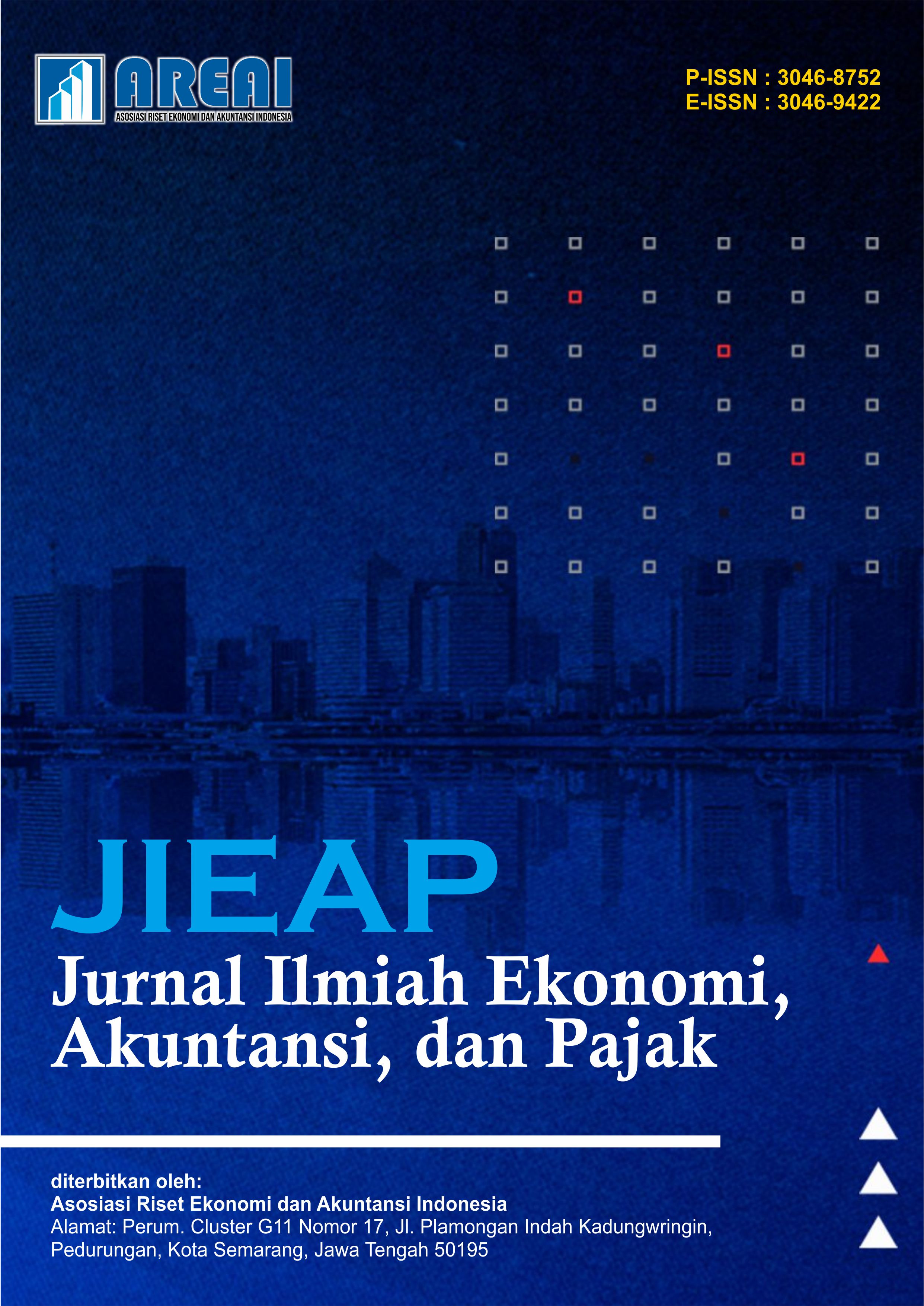Analisis Perubahan Perilaku Konsumen Terhadap UMKM di Cifest Cikarang Selatan Selama Periode Libur
Studi Kasus Pembelian Online Vs. Offline
DOI:
https://doi.org/10.61132/jieap.v2i3.1475Keywords:
SMEs, Buying and Selling, Holiday Period, Online and OfflineAbstract
In recent years, Micro, Small, and Medium Enterprises (MSMEs) have increasingly positioned themselves as one of the main pillars of the Indonesian economy, contributing significantly to employment opportunities, income distribution, and economic resilience. In the local context, Cifest Cikarang Selatan represents a dynamic marketplace where various MSMEs operate and directly interact with consumers. An interesting phenomenon emerges during holiday periods, when consumer behavior shows significant changes, especially in terms of purchasing methods and preferences between online and offline channels. This study aims to explore the transformation of consumer behavior, focusing on the comparative analysis of online and offline purchases, and to evaluate its broader implications for the sustainability and competitiveness of MSMEs operating at Cifest. The research adopts a descriptive and analytical approach, using both recent statistical data and supporting literature to provide a comprehensive understanding of the digital era’s influence on shopping patterns. The findings reveal that online purchases continue to grow rapidly due to convenience, wider product access, and promotional offers that attract customers. However, offline purchases remain relevant, particularly for consumers who value direct product inspection, immediate ownership, and social interaction within traditional marketplaces. For MSMEs, this shift presents both challenges and opportunities. Those that rely solely on conventional offline strategies risk losing competitiveness, while those able to integrate digital platforms with traditional sales methods demonstrate greater adaptability and potential for growth. Overall, this study concludes that the sustainability of MSMEs in Cifest Cikarang Selatan depends largely on their ability to embrace digital transformation without neglecting the strengths of offline interactions. By leveraging both channels strategically, MSMEs can not only survive but also thrive in the increasingly competitive market landscape shaped by evolving consumer behavior.
Downloads
References
Adnan, S. E., Murhaban, S. E., Ningsih, E. F., TM, A., SP, M., Suryani, S. M., & Ulwan, M. W. M. (2024). Strategi pemasaran dan perilaku konsumen di era digital. Mega Press Nusantara.
APJII. (2022). Laporan survei internet Indonesia 2022. Asosiasi Penyelenggara Jasa Internet Indonesia.
APJII. (2023). Laporan survei pengguna internet Indonesia 2023. Asosiasi Penyelenggara Jasa Internet Indonesia.
Arikunto, S. (2010). Prosedur penelitian: Suatu pendekatan praktik. Rineka Cipta.
Azzahrah, F. (2022). Faktor-faktor keputusan pembelian konsumen e-commerce terhadap produk fashion wanita di Kota Makassar [Tesis, Universitas Hasanuddin].
BPS. (2022). Statistik Indonesia 2022. Badan Pusat Statistik.
BPS. (2023). Survei nasional perilaku konsumen Indonesia. Badan Pusat Statistik.
Caswito, A., Octavia, L. N., Adi, T. W., Ahsan, M., Qalbi, P. M., & Simatupang, H. (2024). Pengaruh faktor dan perilaku konsumen pada keputusan pembelian di e-commerce dan pasar konvensional. Jurnal Minfo Polgan, 13(2), 2203-2211. https://doi.org/10.33395/jmp.v13i2.14412
eMarketer. (2023). Indonesia e-commerce forecast 2023.
Euromonitor International. (2023). Consumer trends in Southeast Asia.
Fujitsu. (2023). Digital consumer report Asia 2023.
Google, & Temasek. (2021). e-Conomy SEA 2021 report.
Hootsuite. (2023). Social media trends in Indonesia 2023.
Kementerian Koperasi dan UKM. (2023). Laporan tahunan UMKM Indonesia.
Kementerian Perdagangan. (2023). Statistik perdagangan dalam negeri.
Kotler, P., & Keller, K. L. (2016). Marketing management (15th ed.). Pearson Education.
Kusuma, D. (2023). Optimalisasi omnichannel untuk UMKM. Jurnal Manajemen Pemasaran, 11(2), 45-53.
Mahfuz, M. (2022). Pengaruh labelisasi halal, kualitas produk dan harga terhadap tingkat penjualan produk UMKM (Usaha Mikro Kecil Menengah) kopi di Kabupaten Lombok Utara [Tesis, UIN Mataram].
McKinsey. (2023). Consumer insights: Indonesia 2023.
Mulyani, T. (2023). Strategi digital marketing UMKM. Jurnal Ekonomi Kreatif, 4(1), 25-33.
Nielsen. (2022). Consumer behavior survey Indonesia 2022.
Nielsen. (2023). E-commerce trends in Indonesia.
Prasetyo, A. (2023). Transformasi digital UMKM di era pandemi. Jurnal Ekonomi dan Bisnis, 5(1), 67-76.
Sari, R. (2023). Pengaruh media sosial terhadap penjualan UMKM. Jurnal Ilmu Komunikasi, 8(2), 89-97.
Sari, W., & Derajat, S. P. (2025). Pengaruh diskon dan promosi terhadap perilaku konsumen di aplikasi Shopee. Krakatau (Indonesian of Multidisciplinary Journals), 3(1), 44-50.
Shoppers Stop. (2022). Laporan kepuasan pelanggan ritel offline.
Sirait, H., Chatra, A., Febrianti, S., Rachim, A., Suarjana, I. W., & Sirait, M. J. (2025). Ekonomi mikro dan UMKM di Indonesia: Tantangan, strategi menghadapi efisiensi dan pasar global. Star Digital Publishing.
Sugiyono. (2017). Metode penelitian kombinasi (mixed methods). Alfabeta.
Suhendra, B. (2023). Strategi pemasaran UMKM melalui website. Jurnal Bisnis Digital, 2(1), 55-63.
Downloads
Published
How to Cite
Issue
Section
License
Copyright (c) 2025 Jurnal Ilmiah Ekonomi, Akuntansi, dan Pajak

This work is licensed under a Creative Commons Attribution-ShareAlike 4.0 International License.





